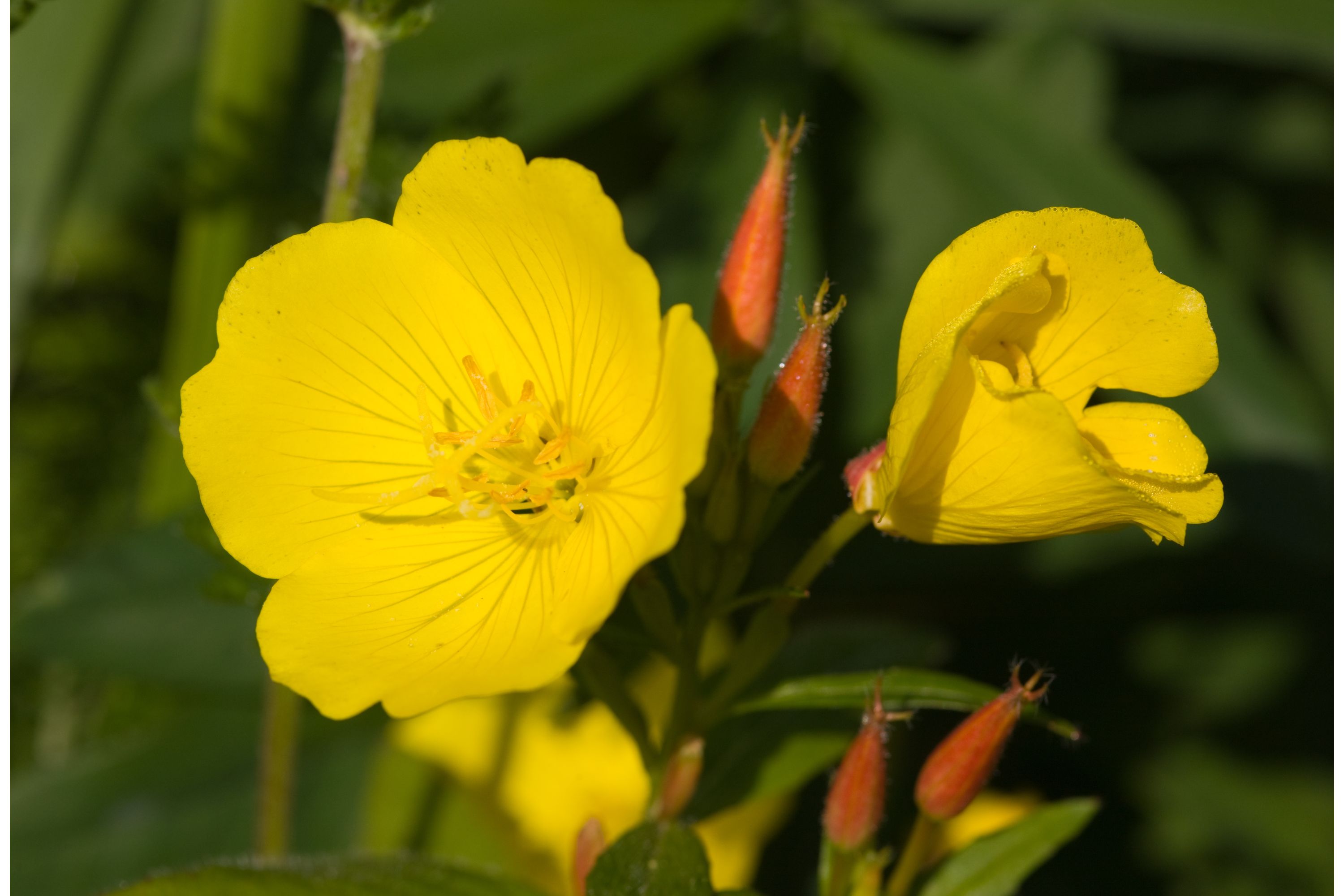Evening primrose
(Oenothera biennis)

Description
Oenothera biennis, commonly known as the common evening primrose, is a flowering plant that belongs to the Onagraceae family. It is a biennial plant that is native to North America, but it is also found in many other parts of the world. The plant is known for its beautiful yellow flowers that bloom in the evening, giving it the name "evening primrose." In this article, we will discuss the various aspects of Oenothera biennis, including its botanical characteristics, cultivation requirements, medicinal uses, and ecological significance. Botanical Characteristics: Oenothera biennis is a biennial plant that can grow up to 1.5 meters tall. The plant has a long taproot and a rosette of leaves during its first year of growth. The leaves are lance-shaped, up to 25 cm long, and have a slightly serrated edge. In the second year, the plant produces a tall stalk with multiple branches, each bearing yellow flowers that bloom in the evening. The flowers are four-petaled and up to 5 cm in diameter. The plant produces a capsule-like fruit that contains many small seeds. Cultivation Requirements: Oenothera biennis can grow in a wide range of soil types, including sandy, loamy, and clay soils. It prefers well-drained soils that are rich in organic matter. The plant requires full sun exposure and can tolerate partial shade. It is hardy to USDA zones 3-9, meaning it can withstand a wide range of temperatures. The plant is also drought tolerant and does not require much water. Propagation of Oenothera biennis can be done by sowing the seeds directly in the garden in the spring or fall. The seeds should be planted about 1 cm deep and spaced 30 cm apart. The plant requires minimal maintenance, but it is essential to keep the area around the plant weed-free to prevent competition for nutrients and water. Medicinal Uses: Oenothera biennis has been used for centuries for its medicinal properties. The plant contains high levels of gamma-linolenic acid (GLA), an omega-6 fatty acid that is essential for human health. GLA has been shown to have anti-inflammatory properties and can help alleviate symptoms of conditions such as rheumatoid arthritis, eczema, and asthma. In addition, the plant has been used to treat various other ailments, including premenstrual syndrome (PMS), menopause symptoms, and breast pain. The plant's oil extract is available in the form of capsules or as a topical cream. Ecological Significance: Oenothera biennis is an important plant in many ecosystems. The plant's flowers are a source of nectar for many pollinators, including bees and moths. The plant is also a host plant for the larvae of several moth species, including the evening primrose moth (Schinia florida). The moth larvae feed on the plant's leaves and flowers, but they do not cause significant damage to the plant. Furthermore, the plant is considered a pioneer species, meaning it is one of the first plants to colonize disturbed areas. It is often found growing along roadsides, in fields, and in other disturbed habitats. As such, the plant plays an essential role in the ecological restoration of degraded lands. Conclusion: Oenothera biennis is a fascinating plant with many valuable properties. It is not only a beautiful addition to any garden but also an important plant in many ecosystems. The plant's medicinal uses have been recognized for centuries, and its oil extract is widely available in the form of capsules or topical cream. The plant's importance as a host plant for moth species and as a pioneer species in ecological restoration makes it a valuable plant.
Taxonomic tree:







